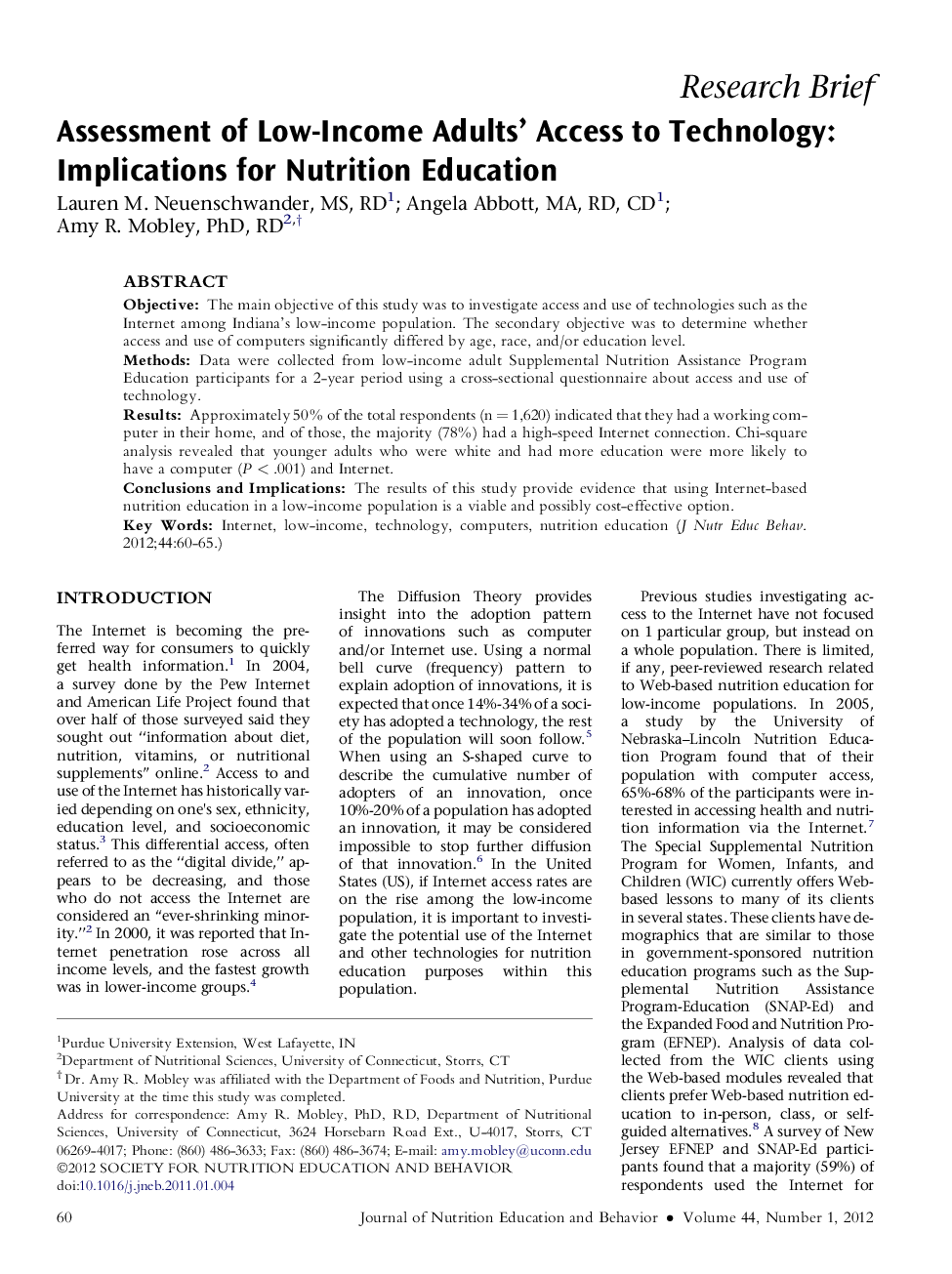| کد مقاله | کد نشریه | سال انتشار | مقاله انگلیسی | نسخه تمام متن |
|---|---|---|---|---|
| 362427 | 620629 | 2012 | 6 صفحه PDF | دانلود رایگان |

ObjectiveThe main objective of this study was to investigate access and use of technologies such as the Internet among Indiana's low-income population. The secondary objective was to determine whether access and use of computers significantly differed by age, race, and/or education level.MethodsData were collected from low-income adult Supplemental Nutrition Assistance Program Education participants for a 2-year period using a cross-sectional questionnaire about access and use of technology.ResultsApproximately 50% of the total respondents (n = 1,620) indicated that they had a working computer in their home, and of those, the majority (78%) had a high-speed Internet connection. Chi-square analysis revealed that younger adults who were white and had more education were more likely to have a computer (P < .001) and Internet.Conclusions and ImplicationsThe results of this study provide evidence that using Internet-based nutrition education in a low-income population is a viable and possibly cost-effective option.
Journal: Journal of Nutrition Education and Behavior - Volume 44, Issue 1, January–February 2012, Pages 60–65